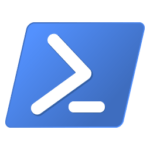PowerShell for SysAdmins: 10 Essential Commands You Must Know
 For system administrators, having the right tools at their fingertips can make all the difference. Microsoft’s PowerShell is one such tool, packed with powerful commands and scripting capabilities that make managing and automating administrative tasks on Windows a breeze. If you’re a sysadmin (or aspiring to be one), here are ten essential PowerShell commands you must add to your toolkit.
For system administrators, having the right tools at their fingertips can make all the difference. Microsoft’s PowerShell is one such tool, packed with powerful commands and scripting capabilities that make managing and automating administrative tasks on Windows a breeze. If you’re a sysadmin (or aspiring to be one), here are ten essential PowerShell commands you must add to your toolkit.
1. Get-Command
Starting with the basics, if you ever feel lost or need to discover new commands, Get-Command is your go-to:
Get-CommandThis will list every command available to you, but you can also search for specific commands or filter them by type.
2. Get-Help
Before diving into a command, it’s wise to understand its usage. Get-Help provides detailed information:
Get-Help Get-Command3. Get-Process
Need to know which processes are running? Get-Process will list them for you:
Get-ProcessCombine this with other commands or filters to target specific processes or attributes.
4. Stop-Process
To stop a specific process (especially useful if a particular application is misbehaving), use Stop-Process. For instance, to stop a process with a PID of 1234:
Stop-Process -ID 12345. Get-Service
To manage services, start with Get-Service to list all services and their status:
Get-Service6. Start-Service and Stop-Service
Following up on services, you can start or stop them with Start-Service and Stop-Service respectively:
Start-Service -Name "ServiceName"
Stop-Service -Name "ServiceName"7. Get-EventLog
Audit or troubleshoot system issues by accessing event logs:
Get-EventLog -LogName Application -Newest 10This will display the 10 newest entries from the Application log.
8. Restart-Computer and Stop-Computer
Remote management is often needed, and with PowerShell, you can restart or shut down computers:
Restart-Computer -ComputerName "ComputerName"
Stop-Computer -ComputerName "ComputerName"9. Get-ADUser (Requires Active Directory module)
For sysadmins in an Active Directory environment, managing user accounts is a frequent task. Fetch details about an AD user:
Get-ADUser -Identity "username"10. Set-ExecutionPolicy
For running scripts, you might need to modify the execution policy. This command helps in setting it. Remember, it’s crucial to be aware of security implications:
Set-ExecutionPolicy RemoteSignedIn Conclusion
PowerShell is an expansive and robust tool, and the above commands merely scratch the surface. As a sysadmin, mastering PowerShell can drastically simplify and speed up your daily tasks. Dive deep, practice regularly, and soon enough, you’ll be scripting and automating like a pro!